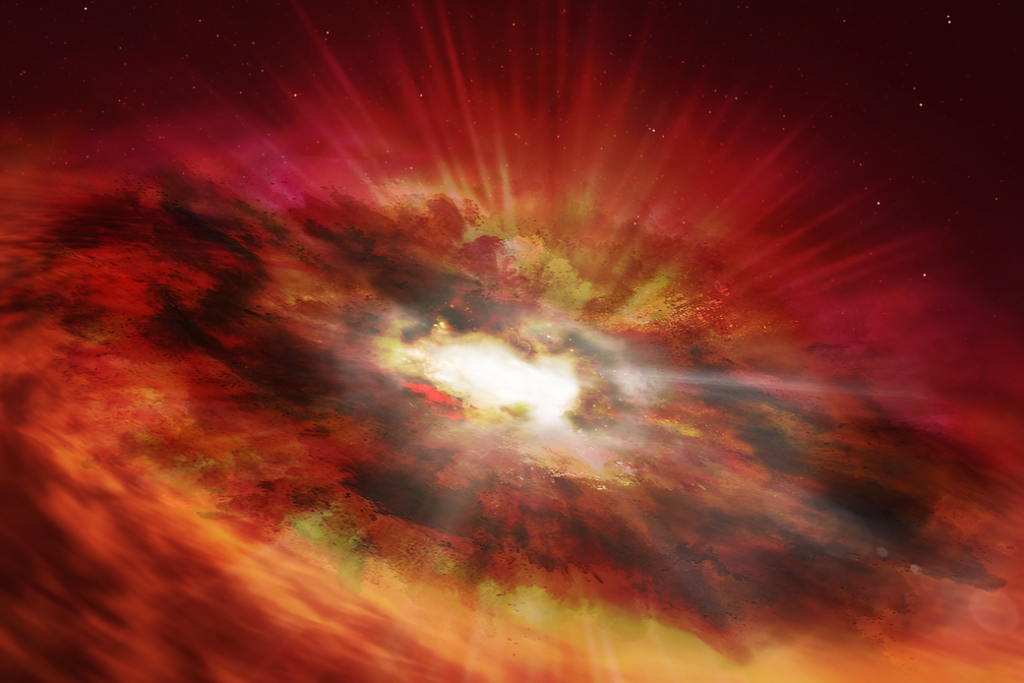Advice for writers of physics or fiction
In March, Natalie Wolchover, senior editor at Quanta magazine, did a two-week residency at Cornell’s College of Arts & Sciences as a Distinguished Visiting Journalist. She chatted with students about writing and with scientists about their new ideas. Natalie writes complex yet compelling science articles, and it was exciting for me to think of the first bits of new pieces coming together as she talked about string theory or nanoscale robots or quantum computing with researchers.
At the end of the residency, Natalie shared her science-writing process in a master class, “Telling Stories about Science.” I was delighted to learn that her (non) secret to writing a good science article is story first – let science follow, an approach that I – a fiction writer who gets assigned stories about hydrogen fuel cells, machine learning and black holes – can fully embrace.
“Put people in the story,” Natalie said, sharing one of her guiding principles. “Readers will care about the results of the questions if they see why the researcher cares.”
This rule started to influence my own interviewing and writing the very next day, and it continues to make writing about science, even when I am way out of my depth, more approachable for me, and more fun.
Here is Natalie Wolchover’s full list of seven rules for telling stories about science:
1) Tell a real story.
And what is a story? Start by creating tension, then move toward a resolution. A key challenge in science writing (and in fiction, I add) is, “Figuring out how to convey early on what the reader will learn without giving it away.” Keep that tension until the end.
To illustrate this and all her other points, Natalie gave an example from her own work: “Does Time really Flow? New Clues from a Century-old Approach to Math.”
2) Hang the story on a news hook.
Time (looking at her example) is a timeless question; to pull a reader in, wait to tell a story until there’s a new development. (You’ll sometimes wait for years). Types of news hooks: new study; trend of studies; an event. A news hook doesn’t have to be the most ground-breaking. Look for a smaller splash.

3) Identify the deep question behind the research questions.
In the 2016 article “What no new particles means for physics,” Natalie wrote about a bunch of physicists who discover they don’t have any new particles: so is the universe inevitable? The article was more about the physicists as people than their non-discovery.
4) Convey passions, motivations and emotions, showing that science is a human endeavor
Put people in the story: Readers will care about the results of the questions if they see why the researcher cares. “I’m really telling stories about scientists,” Natalie said.
Quotes (my favorite) are an essential way of getting readers connected to the scientist…and the truth. And the key to getting good quotes? Talk with the researcher thoughtfully. Often, the physicist’s motivations provide the tension of a story: Scientist WANTS to find X. Resolution: finds X.
It’s looking more and more like I, credentialed with an MFA in fiction, am actually qualified to write about … scientists, if not science.
5) Take the shortest explanatory path
Natalie writes long, then shortens. “My job is to find the straightest shot from what readers know to what I want them to understand,” she said.
To do this, tell it straight: eliminate jargon, extended analogies and information for its own sake. Every word must build toward the resolution. And use preexisting simple ways of expressing complicated things, for example, “In 1974, Stephen Hawking calculated that black holes’ secrets die with them.” (Simple, reduced, yet not cliché ). Finally, use mechanistic explanations. Describe scientific phenomena as sequences of cause and effect.
6) Describe examples to illustrate trends.
Pick a few effective ones, without writing a review of all the research: “I like to describe the most illustrative example, then explain how they fit into the bigger picture.”
7) Embrace complexity, disagreement, uncertainty.
Trying to turn messy scientific research into a coherent narrative risks over-simplification. The best narratives are often the complicated ones: scientists disagree; experimental facts disagree; or there’s a twist in the story. Remember that readers don’t want jargon—but they do like drama!
After giving these useful points, Natalie shared in the Q&A that she writes about topics she’s genuinely interested in, sometimes compiling notes, research and source interviews for years before finding the opportunity to publish. This leads me to two last thoughts for writers: Be curious, be patient.
Great advice for any writer, of physics or fiction.